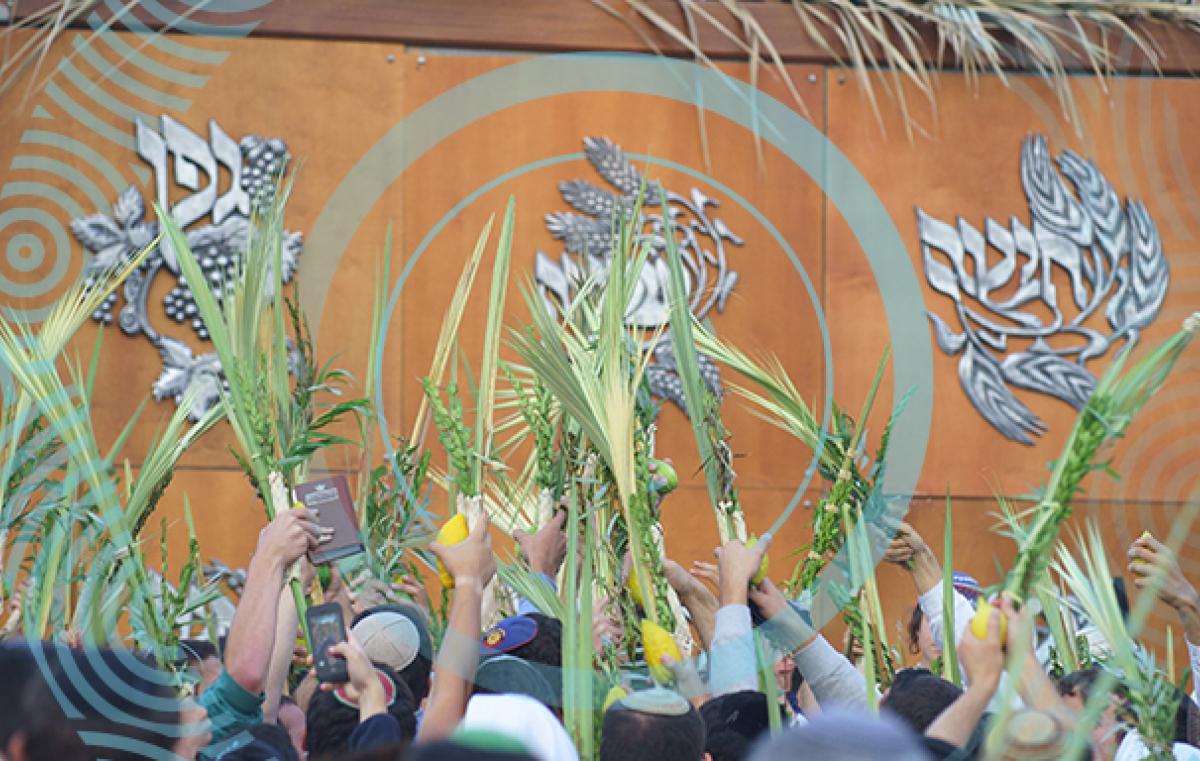The Essence of Joy on Sukkot and Simchat Torah
The festivals of Sukkot and Simchat Torah, mentioned in the Bible, are an ancient source of true Jewish “joie de vivre”

The pace of modern life is very demanding and requires endless commitment. Most people struggle continuously in their search for the true essence of their “joie de vivre.” Dr. Avraham Gottlieb, of Bar-Ilan University’s Shulman School of Basic Jewish Studies, seeks to delineate the terms “joy” and/or “happiness” in a universally accepted terminology and to address these terms from the Jewish perspective. His study elaborates on the expression "joie de vivre" from our vantage point, which deems it to be a mode of behavior predicated on an “appreciation of goodness” by the individual, using the Positive Psychology approach, as we consider it to be a beneficial and recommended way of life.
The French phrase “joie de vivre” is the classic translation of the Hebrew “simchat chayim”: a cheerful enjoyment of life; an exultation of the spirit; a carefree way of living – not necessarily a negative approach involving a lack of civic or moral responsibilities, rather a lighter attitude toward life.
The joy of Jewish festivals is essentially temporary happiness, a fleeting positive experience that may, however, be intensified and transformed into a continuous, long-lasting ‘’simchat chayim” or “joie de vivre” through practical wisdom and optimism – seeing the good in life. When “simchat chayim” is accompanied by an appreciation of goodness, then happiness may become a permanent character trait, guiding the individual throughout his life.
This is the application of positive psychology, which was first recognized as a new field of scientific study in 1998 by the Jewish-American social psychologist and researcher of joy, Prof. Martin Seligman, who opined, “Without optimism – life is shorter!”
Psychology and common sense distinguish between two aspects of positive experiences: the first, joy – is temporary and short-lived. And the second, happiness – lasts over time, is inclusive and remains a relatively stable part of our lives. Thus, everlasting joy, such as “simchat olam” (Isaiah 35, 10) and “to be in a constant state of happiness” (R. Nachman of Breslov, Ukraine, 18th-19th century, Likutei Moharan) is relatively tangible, stable happiness, lasting over time.
In Jewish sources, a distinction exists between happiness – “Blessed is the man” (the happy and blessed man) at the beginning of the book of Psalms – and joy – “Visamachta B’chagecha” (“and you shall rejoice on your Festival” in Deuteronomy 16;14). The Torah clearly and directly calls the person to “Rejoice in your festival!”
However, the idea was later concluded at the end of verse 15, with the exclamation: “Vihayita ach samayach!” – and you shall only be happy” – which teaches us: only be happy, do not indulge in debauchery, nor wild, unruly revelry. Joy has boundaries that are designed to ensure true happiness.
According to the “Sefat Emet”, the Rebbe of the Gerrer Hasidim, (19th century Poland), the two readings in verses 14 and 15, should be joined, as is customarily sung: “Visamachta B’chagecha … Vihayita ach samayach” –“and you shall rejoice on your Festival…and you shall only be happy.”
Rejoice on the Festivals of Sukkot and Simchat Torah so that you can be “satiated” from the inner joy and be happy all year long.
A similar rendering is given by the Orthodox Jewish philosopher and Biblical commentator, R. Samson Raphael Hirsch (19th century Germany), who explains that temporary joy on the holiday may be transformed into a permanent personality trait of happiness. In addition, he emphasizes the true character of Jewish joy, which has boundaries, so as not to taint the joy. Thus, with time, the character trait becomes a way of life.